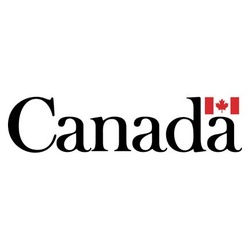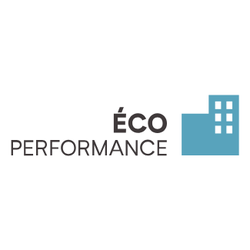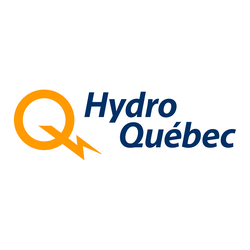
Community Interaction Program — Study projects
At a glance
- Maximum amount : 200,000 $
- Up to 70% of project cost
- Open Date : October 15, 2024
- Closing date : October 15, 2024
- Agriculture, forestry, fishing and hunting
- Other services (except public administration)
- Quebec
- Non-profit
- Public or Parapublic institution
- All revenue ranges
- All organization sizes
- Indigenous Peoples
- Research
- Environment
- Economic, Social and Community Development
- General public
- Indigenous peoples
- Rural / Remote communities
- Nonprofits / charities
- Academia / students
- Community leaders
- All structures
- Regional
- Provincial
Overview
Get up to $25,000 in funding for a study project pertaining to a specific environmental issue with the aim of identifying concrete actions to be taken in the field.
Activities funded
The Community Interaction Program funds initiatives focusing on the conservation and improvement of the St. Lawrence ecosystem through community involvement and action. Eligible projects are categorized into awareness-raising, study, study-action, and restoration or protection activities.
- Public awareness activities such as seminars, forums, symposiums, and information sessions addressing specific environmental issues.
- Study projects that include the development of action plans, characterization studies, inventories, and feasibility studies.
- Study-action projects that combine the development of action plans with the implementation of restoration projects.
- Restoration projects involving shoreline clean-up, stabilization, revegetation, protection of wildlife and plant species, and clean-up of waste disposal sites related to the St. Lawrence area.
- Protection projects aimed at conserving biodiversity and promoting sustainable use of the St. Lawrence ecosystem.
Eligibility
Eligibility for this grant is restricted to specific types of organizations operating within Quebec, Canada.
- The applicant must be a non-profit non-government organization that has been legally constituted for at least one year.
- The applicant must have an established place of business in Quebec.
- The applicant must demonstrate that they have a charter under Quebec’s Companies Act (Part III) or its equivalent.
- Indigenous communities are also eligible.
- Individuals, departments, government agencies, municipalities, educational institutions, and private companies are not eligible.
Who is eligible?
The Community Interaction Program is open to non-profit non-government organizations and Indigenous communities. Organizations must have been legally constituted for at least one year and have an established place of business in Quebec. Additionally, eligible organizations must demonstrate that they have a charter under Quebec’s Companies Act (Part III) or its equivalent. Individual departments, government agencies, municipalities, educational institutions, and private companies are not eligible to apply for this grant.Who is not eligible
This grant is intended to support non-profit and community-driven environmental initiatives and explicitly excludes certain types of organizations. It aims to ensure alignment with goals related to conservation and community benefit within the specified geographic area.
- Individual applicants are not eligible.
- Departments and government agencies cannot apply.
- Municipalities are excluded from eligibility.
- Educational institutions are not permitted to apply.
- Private companies are restricted from applying.
Eligible expenses
The Community Interaction Program supports projects focusing on the conservation and enhancement of the St. Lawrence ecosystem through community-driven initiatives. Eligible projects encompass a range of activities aimed at raising awareness, conducting studies, implementing study-action plans, and undertaking restoration and protection efforts.
- Awareness-raising activities addressing specific environmental problems and targeting particular groups with a focus on concrete, short-term actions.
- Study projects related to developing action plans for specific environmental issues.
- Study-action projects combining feasibility studies with implementation of environmental actions.
- Restoration projects focused on cleaning, stabilizing, and revegetating shorelines and protecting wildlife and plant species.
- Protection projects that conserve biodiversity and promote sustainable use of the St. Lawrence.
Eligible geographic areas
This grant is available exclusively to projects implemented in the St. Lawrence area, a specific geographical region outlined by the funding body. This focus ensures the promotion of community projects that enhance and conserve the St. Lawrence ecosystem.
- The water, bed, shores, coastline, wetlands, barachois, islands, archipelagos, and fluvial lakes of the St. Lawrence.
- The area between Cornwall and Gaspé on the south shore.
- The Québec portion of Chaleur Bay and the Magdalen Islands.
- The area between Carillon and Blanc Sablon on the north shore, including Anticosti Island and the Saguenay River.
- Main tributaries and sections of secondary tributaries essential to species dependent on the St. Lawrence.
Selection criteria
The evaluation and selection of projects for the Community Interaction Program are based on specific criteria to ensure they meet the objectives of enhancing and conserving the St. Lawrence ecosystem.
- Clear description and rationale of the environmental issue addressed by the project.
- Extent of community involvement and support in the project.
- Defined target group and strategy for engaging this group.
- Quality and comprehensiveness of the project’s communication plan.
- Realistic and detailed budget estimate.
- Clear and feasible project schedule.
- Sound and appropriate methodologies for project activities.
- Defined performance indicators to measure project outcomes.
- Long-term sustainability of environmental benefits.
- Documented partnerships with other organizations and contributions.
How to apply
Eligibility Verification
- Confirm that your organization is eligible according to the program criteria.
- Check that your project is eligible by consulting the relevant section or by contacting a project officer.
Project Preparation
- Contact a project agent to discuss your project idea.
- Write the detailed work plan including objectives, scope, and methodology.
- Develop the budget with a fair estimate of eligible costs.
- Obtain the necessary partnership and support letters.
- Attach all necessary documents such as PGIRs, plans, and justifications.
Complete the application form
- Complete the funding application form by including all required sections.
- Verify that all information is complete and accurate.
Submission of the request
- Send the request by email, fax, or by mail before the deadline (March 1st or October 15th).
- Ensure a proven shipping date (postmark, electronic date, or fax confirmation).
Additional information
The Programme Interactions communautaires by the Canadian government aims to support community projects that enhance the St. Lawrence ecosystem, through financial contributions targeted at non-profit organizations and Indigenous communities in Quebec.
- The project timeline cannot exceed 36 months.
- The programme can finance up to 70% of the total eligible project expenses.
- All proposals must be submitted along with a detailed budget and timeline.
- Expenses such as acquisition of land or buildings, recurrent maintenance costs, loan repayment, and purchase of office furniture or IT equipment are non-eligible.
- Supplementary documentation like impact assessments, permits, and property titles may be required.
- Applicants must demonstrate concrete community involvement and partnership support in their proposals.
- Projects can fall under categories such as Sensitization, Study, Study-Action, or Restoration/Protection.
- Environmental impact mitigation measures need to be described.
Contacts
Frequently Asked Questions about the Community Interaction Program — Study projects Program
What is the Community Interaction Program — Study projects?
How much funding can be received?
What expenses are eligible under Community Interaction Program — Study projects?
What is the deadline to apply?
Is the Community Interaction Program — Study projects a grant, loan, or tax credit?
Who are the financial supporters of the Community Interaction Program — Study projects?
Who is eligible for the Community Interaction Program — Study projects program?
Who can I contact for more information about the Community Interaction Program — Study projects?
Where is the Community Interaction Program — Study projects available?
Are Indigenous Peoples eligible for the Community Interaction Program — Study projects program?
More programs like this

Support for biofood exports - individual projects
Ministry of Agriculture, Fisheries and Food (MAPAQ)
ÉcoPerformance — Recommissioning of building mechanical systems
Gouvernement du Québec
Panorama Program
Investissement Québec (IQ)
Financing to respond to the offensive of new tariffs and for initiatives for resilient and exporting companies (FRONTIERE)
Investissement Québec (IQ)
Program to support the development of agriculture and agri-food in the regions
Ministry of Agriculture, Fisheries and Food (MAPAQ)
Efficient Solutions Program — Agricultural Component
Hydro-Québec
PADAAR — Measure 4021 – Promotion of regional products
Ministry of Agriculture, Fisheries and Food (MAPAQ)
Support program for the development of reserved designations and promotional terms — Component 1
Ministry of Agriculture, Fisheries and Food (MAPAQ)
AgroPerformance – Stream 1 : Support for the agricultural sector in adopting agritechnologies
Gouvernement du Québec